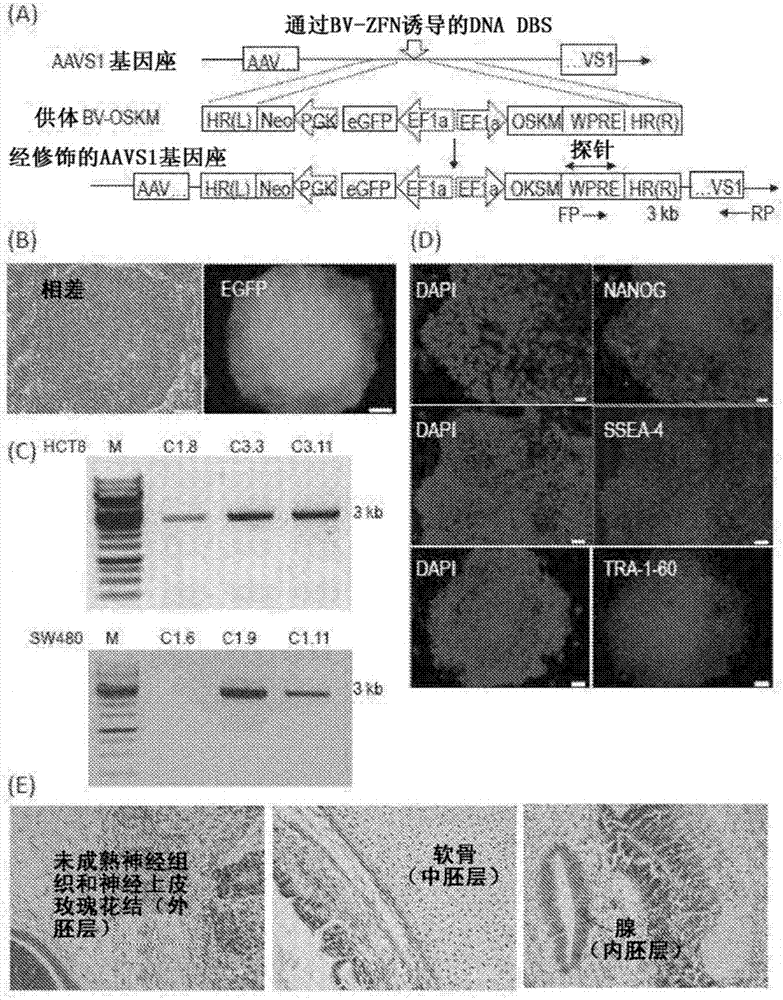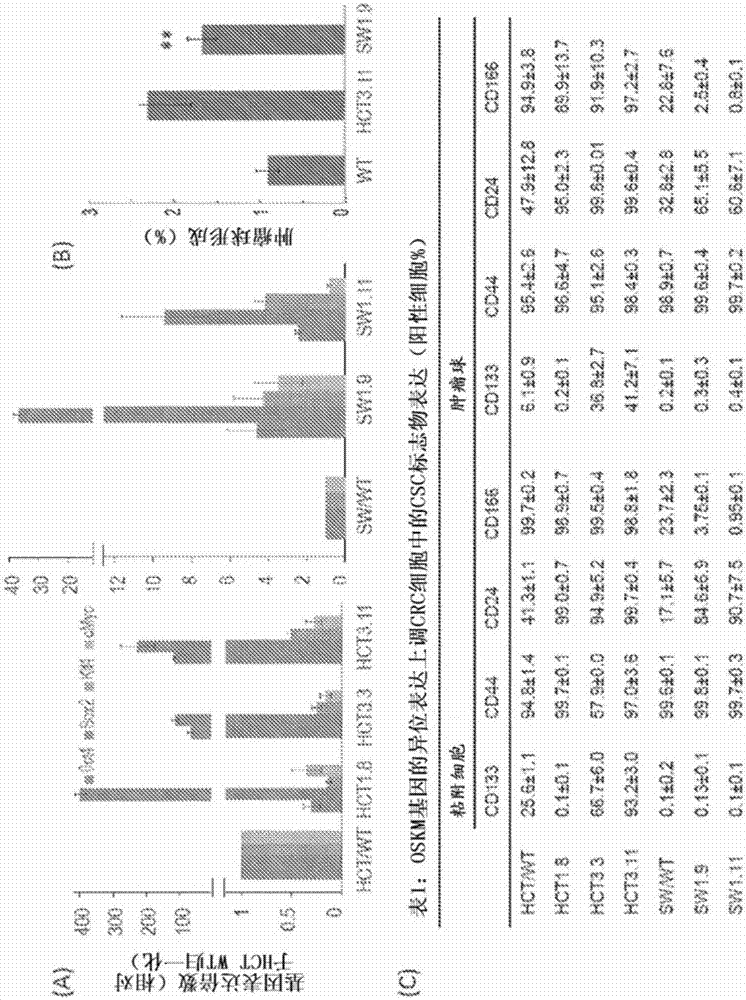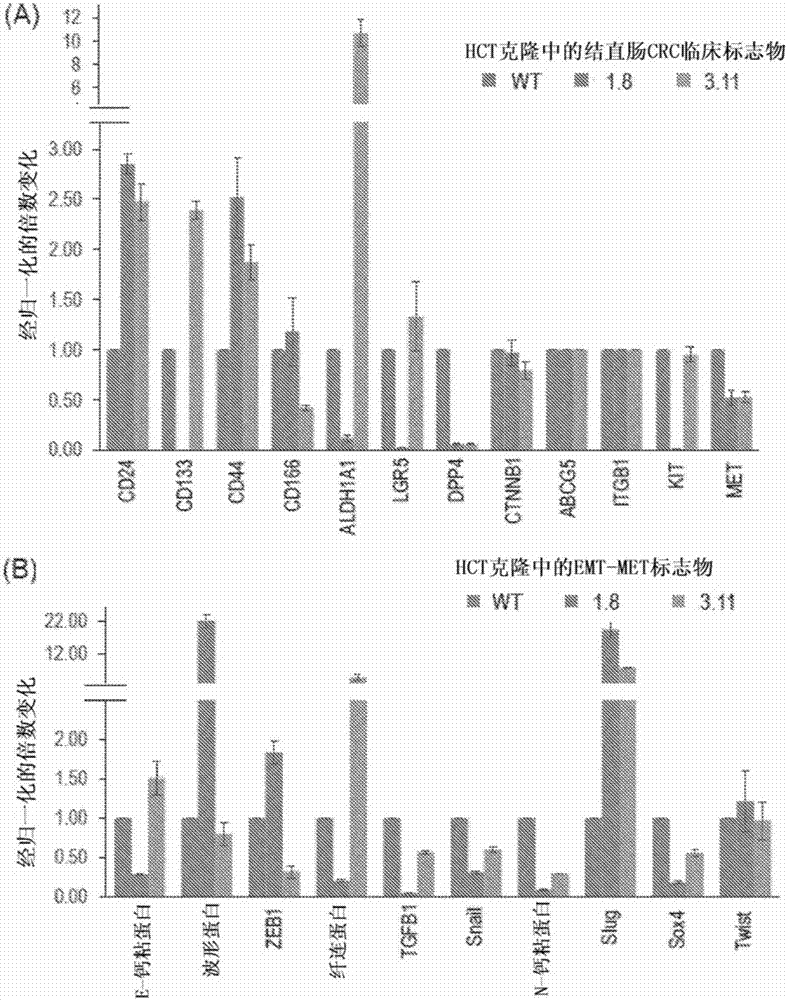A method to up-regulate cancer stem cell markers for the generation of antigen specific cytotoxic effector T cells
A technology of stem cells and cells, applied in the field of cancer immunotherapy, can solve problems such as lack of
- Summary
- Abstract
- Description
- Claims
- Application Information
AI Technical Summary
Problems solved by technology
Method used
Image
Examples
Embodiment 1
[0089] Example 1 Materials and Methods
[0090] Zinc finger nuclease technology was used to insert a group of cellular reprogramming factors called OSKM factors (Oct4, Sox2, Klf4 and cMyc) into the genome of CRC cells for the induced reprogramming of these cancer cells. CSC-like cells were enriched from reprogrammed CRC cells using a tumorsphere formation method. These CSC-like cells consistently showed up-regulated expression of CD24 and many other colorectal CSC-associated antigens. These CSC-like cells were then used for dendritic cell (DC) vaccination, which has been tested as an adjuvant therapy for CRC. After sensitization of autologous naive T cells with DCs pulsed with OSKM-expressing CRC cell lysate, T cells were detected in an IFN-γ EliSpot assay by restimulation with T2 cells loaded with CSC antigen-related peptides. Significantly increased IFN-γ positive puncta demonstrated that pulsed DCs were able to elicit anti-CSC antigen responses in autologous T cells. Thu...
Embodiment 2
[0118] Generation of colorectal cancer iPC cells by stably expressing the OSKM gene
[0119] An engineered zinc finger nuclease (ZFN) technology based on baculovirus transduction was recently developed for site-specific integration of OSKM factor genes (Phang et al., 2013). This technique involves the use of two non-integrating baculovirus vectors: one expressing ZFN (BV-ZFN) and the other encoding the OSKM transcription factor gene (BV-OSKM) as a donor vector. BV-OSKM carries an expression cassette containing the human Oct4, Klf4, Sox2 and c-Myc genes linked to the self-cleaving 2A sequence and IRES as fusion genes and driven by the EF1a promoter. The expression cassette is flanked by sequences homologous to the AAVS1 locus. After co-transduction with BV-ZFN and BV-OSKM ( figure 1 A), the expression cassette can be efficiently introduced into the AAVS1 locus in human chromosome 19, which is the opening of insulator elements flanking the integrated transgene to protect the i...
Embodiment 3
[0122] Ectopic expression of OSKM confers CSC-like properties to human CRC cells
[0123] HCT8 and SW480 derived iPC cells were expanded in CSC medium consisting of a 1:1 mixture of DMEM / F12 supplemented with 1% FBS and 20 ng / ml human epidermal growth factor (EGF). Using the RTqPCR method, the relative expression levels of the OSKM gene in the selected clones were determined ( figure 2 A). An 8- to 400-fold overexpression of Sox2 was observed in all HCT8 and SW480 clones examined compared to wild-type (WT) cells. A 2- to 100-fold upregulation of Oct4 was observed in 4 of the 5 clones examined. Western blot analysis confirmed up-regulated expression of Oct4 and Sox2 proteins in these clones. The upregulation of c-Myc and Klf4 was less pronounced, probably because of the high level of expression of endogenous genes in HCT8 and SW480CRC subclones.
[0124]An attempt was made to elucidate the role of ectopic expression of the OSKM gene in the phenotypic characteristics of CSC...
PUM
 Login to View More
Login to View More Abstract
Description
Claims
Application Information
 Login to View More
Login to View More - R&D
- Intellectual Property
- Life Sciences
- Materials
- Tech Scout
- Unparalleled Data Quality
- Higher Quality Content
- 60% Fewer Hallucinations
Browse by: Latest US Patents, China's latest patents, Technical Efficacy Thesaurus, Application Domain, Technology Topic, Popular Technical Reports.
© 2025 PatSnap. All rights reserved.Legal|Privacy policy|Modern Slavery Act Transparency Statement|Sitemap|About US| Contact US: help@patsnap.com



